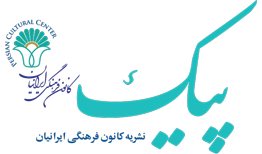ISSD is starting its 34th year of service. In September 1988, the first group of students attended the Persian classes at the All Hallows Catholic Church building in La Jolla. My predecessor— Mrs. Shahri Estakhry, with the help of a group of enthusiastic parents—established the Iranian School of San Diego.
Shortly after, they formed the Persian Cultural Center (PCC) as a nonprofit organization to be able to expand cultural activities and better serve the Iranian American community. The rest is history. Almost 2,000 students have attended ISSD since 1988. Before the COVID ـ19 pandemic, we had 280 students, in all levels, learning the Persian language and Iranian culture. Last year we managed all our classes virtually and via Zoom. In this coming academic year, we will have both in person classes as well as online classes for those students who cannot physically attend the classes.
ISSD has been a pioneer in teaching Persian as a heritage language. We have created our own textbooks that have been used in many schools around the country. ISSD has its own teacher training program. Our Persian Language Program is accredited by all local school districts. High school students can take Persian at ISSD to fulfill their second language requirements.
The Persian Dance Academy, as a part of ISSD, has been teaching Iranian folk dances and performing dances at various cultural events.
PCC, our mother organization that just turned 30 , has grown as well. Peyk (peykmagazine.com), our bi ـlingual cultural magazine, reaches thousands of readers around the world. PCC has presented hundreds of cultural events, music concerts, plays, movies, etc.
In 2013, PCC with the help of the community purchased and established the Iranian American Center (IAC) that has been the home for the community by hosting many cultural gatherings. In the past 33 years, ISSD along with PCC have become two of the most successful cultural organizations outside of Iran. That by itself is a great cause for celebration.
Ali Sadr – ISSD Principal
ISSD has prepared a six volume set of textbooks based on the latest findings of academia on “heritage language” teaching and our own hands ـon experience in the past 33 years. These books are currently being used in several schools around the country. They are available for purchase for schools or individuals.
If you are interested, please contact our office at (858) 552 ـ9355 to order.
A letter from an ISSD alumni
Hana Julazadeh

My experience with the Iranian School of San Diego began when I was about seven years old. My parents had heard of ISSD through a family member and told me that they were going to register me for the Thursday evening classes. Now, I am going to admit, as a very timid young girl, I was not thrilled to hear this. I knew this meant having to spend two hours every Thursday with a bunch of strangers, a concept which, quite frankly, scared me a little bit. But being half Iranian, I knew it was important for me to learn how to speak, read, and write in Farsi. I remember being quite nervous on my first day of class, but my anxieties disappeared almost immediately. My teacher was incredibly welcoming and went out of her way to make sure I felt comfortable. By the end of class, I had even made a friend who helped me come out of my shell (and would end up becoming one of my best friends).
The rest of my years at ISSD went on smoothly. I learned a lot, not only about the Iranian language, but also about Iranian history, traditions, and culture. In fact, I enjoyed the atmosphere of what I called “Persian School” so much that I even became a teacher’s assistant right after I graduated. For five years, I was able to aid in teaching other students exactly what I had learned years prior while maintaining and refreshing my own vocabulary and knowledge. This was an incredible experience for me. It helped me feel comfortable speaking in front of others and gave me leadership and problem ـsolving skills that I will use for the rest of my life.
Although there were definitely days when I did not feel like going to class, I am forever grateful that my parents registered me. Thanks to ISSD, I am able to communicate with the Persian side of my family in their native tongue, which, I believe, brought me closer to them than I would have been otherwise. Learning Farsi has also given me a greater sense of identity and has allowed me to feel more “in touch” with my Iranian heritage. Being born and raised in the United States, I feel incredibly lucky to have had the opportunity to be a part of a program that focuses so much on Iran and its customs.

















